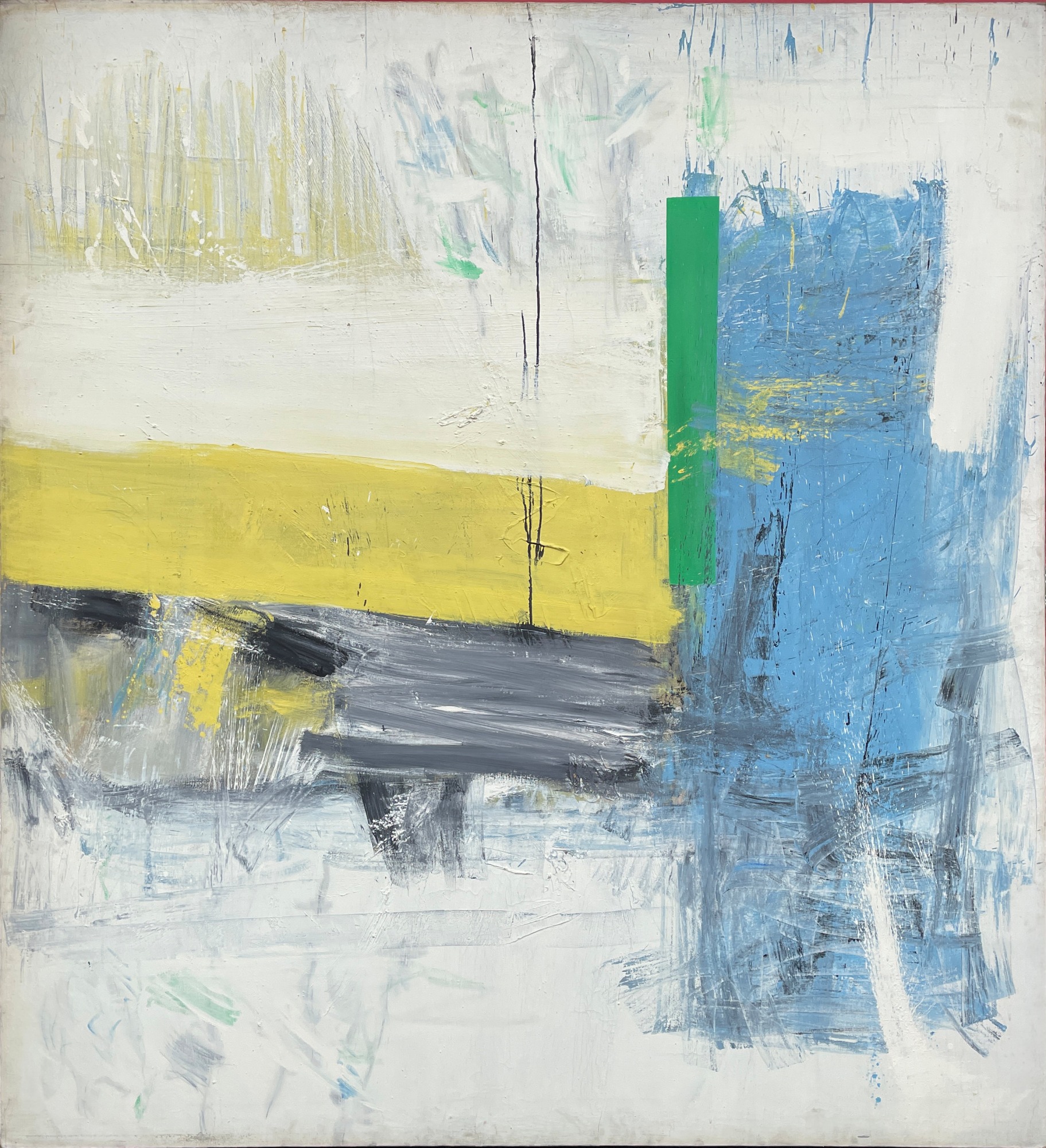Alan Fenton: Reconsidering the 50s Paintings
Lincoln Glenn Gallery is excited to announce an exhibition of Alan Fenton’s monumental canvases from the late 1950s. The exhibition will be on view March 25 – May 6, with an opening reception scheduled for Saturday, March 25th from 6pm-8pm ET.
The first exhibition to focus exclusively on Alan Fenton’s rarely-seen large-scale abstractions will go on view at Lincoln Glenn’s Larchmont space. The artist’s most recent exhibition was a 1977 traveling museum exhibition organized by the Phillips Collection focusing on Fenton’s washes and watercolors. Previously, he had exhibited his paintings in a solo exhibition at Pace Gallery in 1964. This exhibition presents a group of monumental paintings of gestural abstraction, realized by Fenton between 1958 and 1960, a period of great inventiveness when the artist was spending stretches of time in Springs, New York with Adolph Gottlieb.
In his introduction to Fenton’s exhibition catalogue for his one-man show at the Phillips Collection in Washington, Vincent Melzac wrote, ”Fenton is his own man, producing work that is uniquely his…in his work one feels that Fenton is testing the accepted and pushing for a newer and richer visual experience.” Working from top to bottom on his canvases, Fenton was always interested in transitions from “color to color,” from “light to dark,” and from “one point in time to another,” as noted by Jan Muhler, director of the University of Iowa Museum of Art.
Born in 1927 and raised in Cleveland, Fenton already had a successful career as a commercial artist and designer by age 22. In 1955, he relocated to New York to attend Pratt Institute, where he later taught. Fenton studied privately with Jack Tworkov and Adolph Gottlieb, and they both remained lifelong friends and mentors. His artistic influences were as diverse as Whistler and Turner, in addition to Ad Reinhardt and Joseph Albers.
Fenton associated with a hard-partying scene of creatives at Max’s Kansas City, where he was friendly with art dealer Dick Bellamy, filmmaker Jerry Shatzberg, and artists Mark Rothko, Diane Arbus, Paul Jenkins, Morris Louis, David Budd, Carl Holty and Kyle Morris. In 1959, Morris invited Fenton to participate in a group show of the New York School in the March Gallery on 10th Street in 1959.
Shortly after the March Gallery Invitational, Fenton met Vincent Melzac, an influential tastemaker in Washington, D.C., who later became the CEO of the Corcoran Gallery of Art and consistently championed Fenton’s work. In 1966, Fenton persuaded his father-in-law to purchase the historic Tiffany factory at 333 Park Avenue South to convert into loft spaces for artists. Attracting an array of luminaries, including Gottlieb and Tworkov, Fenton created and managed one of Manhattan’s first live/work spaces.
Fenton’s solo exhibitions included the Pace Gallery, Phillips Collection, Isetan Galleries in Tokyo, the New York Cultural Center Museum, Barbara Fiedler Gallery, and the University of Iowa Museum of Art. Selected group shows included the Corcoran Gallery, the Aldrich Museum, Pace Gallery, and the Cleveland Museum of Art. His work was reviewed in ArtNews, Arts Magazine, The New Yorker, The New York Times, the New York Post, the Village Voice, and Art International.
About Lincoln Glenn Gallery
Lincoln Glenn, LLC was founded in 2022, with a mission to present American art from the 19th century to the contemporary period. The gallery exhibits works from artists of the Hudson River School, American Impressionism, Ashcan School, and American Modernism, with a particular focus on Abstract Expressionism and Color Field painting. Lincoln Glenn wishes to revive the legacies and explore the careers of artists working between the 1950s and 1970s who made significant contributions to art history, but whose names may have been forgotten by time.
Media Contact
Lincoln Glenn, LLC
Eli Sterngass / Douglas Gold
(914) 315 6475

About Lincoln Glenn, LLC
Lincoln Glenn, LLC was founded in 2022, with a mission to present American art from the 19th century to the contemporary period. The gallery exhibits works from artists of the Hudson River School, American Impressionism, Ashcan School, American Modernism, with a particular focus on Abstract Expressionism and Color Field painting. Lincoln Glenn wishes to revive the legacies and explore the careers of artists working between the 1950s and 1970s who made significant contributions to art history, but whose names may have been forgotten by time. The gallery will host rotating exhibitions in Larchmont, Westchester.

